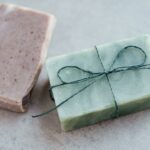Are you ready to dive into the captivating world of soap? Get ready to be amazed as we unlock the mysteries of soap production and ingredients. In this article, we will delve deep into the fascinating world of soap, revealing compelling insights that will intrigue and educate both industry insiders and curious readers alike. From the secrets behind soap production to the impact of ingredients on personal hygiene, prepare to be captivated by the lesser-known aspects of this everyday essential. Let’s embark on this enlightening journey together as we uncover fascinating information about soap.

Fascinating Information About Soap
Soap, an everyday item found in almost every household, holds a world of secrets and fascinating information. Let’s dive into the captivating world of soap production and ingredients, uncovering intriguing details that will leave you in awe.
The Ancient Origins of Soap
Did you know that soap has been used since ancient times? There’s evidence dating back to 2800 BCE, showcasing the long-standing history and importance of this humble cleansing agent. Throughout the centuries, various cultures have developed their own unique soap-making techniques and ingredients.
Soap’s historical significance and its essential role in human hygiene make it a truly remarkable creation.
The Secret Behind Soap’s Chemistry
To understand soap’s production, we must first delve into its chemistry. Soap is created through a process called saponification, which involves a chemical reaction between a fatty acid and a base. This reaction results in the formation of a salt called a soap.
Soap’s chemical composition, a salt of a fatty acid with a long hydrocarbon chain and a carboxylate head, is what gives it its remarkable cleansing properties.
Ingredients that Shape Soap
Soap is made from a combination of animal fats or vegetable oils and a caustic soda, which acts as the base. Depending on the desired properties, additional ingredients like fragrances, colors, and texture enhancers can be incorporated during the soap-making process.
The art of soap-making allows for endless creativity, as ingredients can be added to enhance not only the soap’s functionality but also its sensory experience.
Exploring Different Types of Soap
Soap comes in various forms, each serving a specific purpose. From traditional bar soaps to liquid cleansers and powerful detergents, there is a soap for every need. Bar soap, the most common form, offers convenience and portability, while liquid soap provides ease of use and versatility.
With a wide range of soap options available, finding the perfect match for your personal hygiene needs becomes an exciting journey.
The Practical and Cultural Significance of Soap
Soap’s impact extends far beyond its basic cleansing abilities. It has played crucial roles in various industries, including textiles and medicine, where it has been used for washing, curing skin sores, dyeing hair, and acting as a skin ointment.
Soap’s practical and cultural significance in societies around the world demonstrates its remarkable versatility and importance in our daily lives.
Creating Soap at Home
If you’re feeling adventurous, soap-making can be a rewarding DIY project. There are countless recipes and ingredients available to experiment with, allowing you to create personalized soaps tailored to your preferences.
Making soap at home enables you to unleash your creativity and explore the fascinating world of soap production firsthand.
Pros of Using Soap
- Soap’s cleansing properties effectively remove dirt, oil, and impurities from the skin.
- It helps maintain proper hygiene and prevent the spread of germs and bacteria.
- Soap can be gentle on the skin, especially when formulated with moisturizing ingredients.
- The wide variety of soap options ensures that every individual can find a suitable product for their specific needs.
Soap’s pros, including its ability to cleanse, maintain hygiene, and cater to diverse requirements, make it an indispensable part of our daily routines.
Cons of Using Soap
- Some soaps may contain ingredients that can irritate sensitive skin or cause allergies.
- Certain soap formulations may strip the skin of its natural oils, leading to dryness.
- Soap can create waste through packaging, especially with single-use products.
While soap’s cons exist, being mindful of individual skin sensitivities and environmental impact can help mitigate these concerns.
The world of soap is undoubtedly fascinating, filled with rich history, chemistry, and endless possibilities. Hopefully, this glimpse into the captivating production and ingredients behind soap has left you with a newfound appreciation for this everyday essential.
So the next time you reach for a bar of soap or squirt some liquid cleanser into your hand, take a moment to reflect on the wonders packed into that seemingly simple product.
Unlock the mysteries of soap and embrace the captivating world that lies within.
Soap, an everyday essential for maintaining cleanliness and hygiene, has a long and fascinating history. If you’re a lover of interesting facts, you won’t want to miss out on some remarkable trivia about soap. Discover the secrets behind its creation, the various types available, and how it has evolved over time. Get ready to be pleasantly surprised as you dive into the world of soap trivia. To satisfy your curiosity, click here: Trivia About Soap

FAQ
Question 1: What are the main ingredients used in soap production?
Answer: Soap is made from vegetable oils and/or animal fats combined with a base, such as lye. This mixture undergoes a chemical reaction called saponification to form soap.
Question 2: How long has soap been in use?
Answer: Soap has been used since ancient times, with evidence of its usage dating back to 2800 BCE.
Question 3: What are the different forms of soap available?
Answer: Soap can be found in various forms, including bars, liquid, and powders. Each form serves the purpose of cleansing, lubricating, and perfuming.
Question 4: Can soap have additional ingredients?
Answer: Yes, soap can have various ingredients added for fragrance or texture. These additional ingredients enhance the soap’s sensory experience.
Question 5: How can soap be made at home?
Answer: Soap can be made at home using different recipes and ingredients. The process generally involves heating oil and lye to create a chemical reaction called saponification.
- Unlock Water’s Symbolism: A Cross-Cultural Exploration - April 20, 2025
- Identify Black and White Snakes: Venomous or Harmless? - April 20, 2025
- Unlocking Potential: Origins High School’s NYC Story - April 20, 2025















